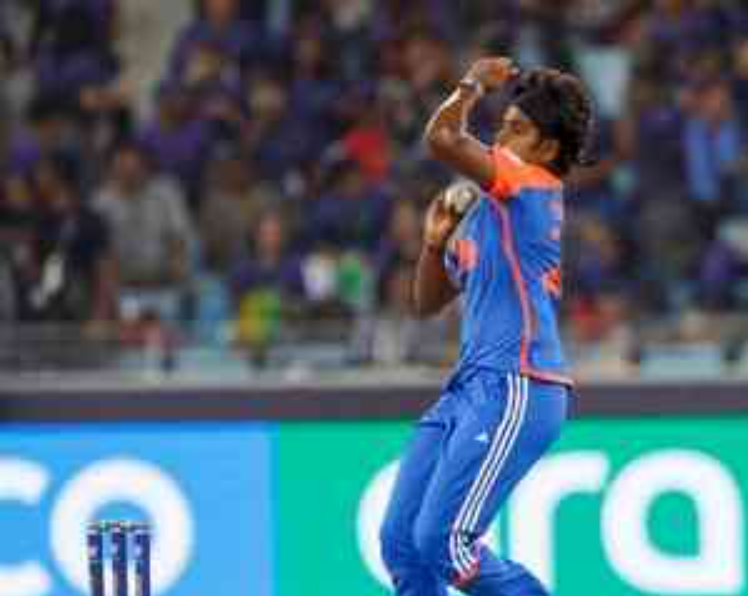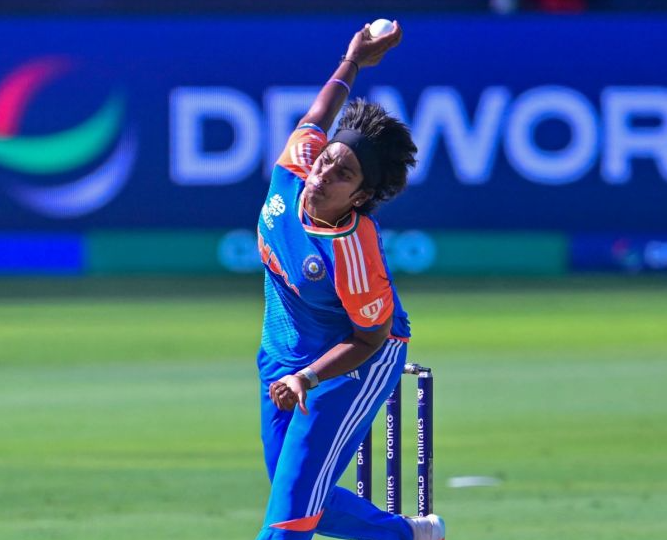Arundhati Cricket is often celebrated for its powerful batting performances, breathtaking bowling spells, and thrilling finishes, but an essential aspect of the game that often goes unnoticed is fielding. A single dropped catch or a misfield can dramatically alter the course of a match. In modern cricket, especially in shorter formats like T20 and One-Day Internationals (ODIs), fielding has emerged as a game-changer. India’s emerging cricketer, Arundhati Reddy, in her recent remarks, acknowledged this crucial role by stating, “Fielding is a work in progress, and we will get there soon.” Her words reflect the ongoing efforts of the Indian women’s cricket team to enhance their fielding standards, aiming to match or surpass their global counterparts.
This article dives into the significance of fielding in cricket, examines the progress the Indian women’s team has made in this area, and discusses Arundhati’s optimistic outlook on their path toward becoming an elite fielding side. We will also explore the broader implications of fielding in modern cricket and the strategies teams employ to improve this critical aspect of the game.
The Role of Fielding in Modern Cricket
Gone are the days when cricket was primarily about batting and bowling. In today’s game, fielding can single-handedly win matches or pull off miraculous defenses. With the advent of the T20 format and the rising competitiveness in international cricket, fielding has transformed from a complementary skill to a crucial pillar of success.
Fielding covers a wide spectrum of skills—from catching and throwing to backing up and saving runs in the outfield. Agile fielders can convert seemingly impossible catches into wickets, and their lightning-fast reflexes can stop runs that would have otherwise gone to the boundary. A sharp, coordinated fielding unit is often the backbone of a successful team, adding pressure on the opposition by turning potential boundaries into singles and ensuring that no easy runs are given.
One of the most vivid examples of the importance of fielding in modern cricket is Jonty Rhodes’ iconic run-out of Inzamam-ul-Haq during the 1992 World Cup, a moment that changed the perception of fielding. Since then, teams have paid increasing attention to building strong fielding units. India, despite its prowess in batting and bowling, has often faced scrutiny regarding its fielding. However, the tide is changing, especially with younger players like Arundhati Reddy emphasizing its importance.  For the more information click on this link
For the more information click on this link
The Journey of Indian Women’s Cricket in Fielding
Over the years, the Indian women’s cricket team has made significant strides in batting and bowling. However, fielding has often been viewed as a department that needed improvement. While Indian fielders like Smriti Mandhana and Harmanpreet Kaur have showcased their brilliance on the field with spectacular catches and athleticism, consistency across the board has been an issue.
Arundhati’s comments highlight that while the team has made progress, there’s still work to be done to reach the highest levels of fielding excellence. It’s not uncommon for fielding lapses to cost crucial matches, as seen in several high-profile games. In the 2017 Women’s World Cup final against England, for example, a few key misfields and dropped catches swung the momentum away from India, leading to a heartbreaking loss.
Despite these setbacks, the team has been putting in extensive work to improve its fielding standards. Under the guidance of fielding coaches and with a renewed focus on fitness, agility, and technique, the Indian women’s team is determined to close the gap with teams like Australia, New Zealand, and England, who have long been considered among the best fielding sides in the world.
Fielding: A Skill that Requires Time and Patience
Improving fielding isn’t an overnight process. Unlike batting or bowling, where success can be gauged through individual performances like scoring runs or taking wickets, fielding is a collective effort. Every player, regardless of their role in the team, needs to contribute as a fielder. This makes fielding improvement a longer and more holistic process.
Arundhati’s recognition that “fielding is a work in progress” reflects her understanding of the time and effort needed to develop into a world-class fielding unit. It’s not just about practicing catches or ground fielding during training sessions; it involves working on fitness, reflexes, decision-making, and field placement strategies. The best fielding units, like those of Australia and South Africa, have achieved their levels of proficiency through years of discipline, consistency, and a clear focus on fielding drills.
Fielding also requires an exceptional level of fitness, which includes agility, speed, and the ability to dive and recover quickly. These attributes are not only about natural talent but about putting in hard work and hours of practice. As the Indian team continues to focus on fitness and athleticism, these qualities will undoubtedly translate into better fielding performances.
Arundhati’s Perspective: A Glimpse into the Team’s Mindset
Arundhati Reddy, being a young and dynamic cricketer, has been vocal about the importance of fielding in modern cricket. Her statement that “we will get there soon” reflects a sense of determination and optimism within the Indian camp. She recognizes that while the team has made commendable progress, there’s still a journey ahead to consistently perform at the highest levels in the field.
Arundhati’s viewpoint isn’t just about the technical aspects of fielding; it’s also about mindset. To become an elite fielding side, a team must be mentally prepared to go the extra mile, putting in the hard yards during practice and matches alike. It’s about building a culture where fielding is given as much priority as batting or bowling.
Additionally, Arundhati’s leadership qualities are coming to the forefront. By addressing fielding as a “work in progress” rather than focusing on shortcomings, she’s sending a positive message to her teammates and the broader cricketing world. This statement indicates that the team is well aware of where they stand and is actively working toward improvement, which is a crucial attitude for any team aiming for success.
Building a Strong Fielding Culture: The Road Ahead
To improve as a fielding unit, India’s women’s cricket team will need to build a strong fielding culture, where each player understands the importance of contributing in the field, regardless of their primary role. Fielding is about attitude—great fielders are often distinguished by their relentless energy and never-give-up mindset. This culture is fostered by team leaders, coaches, and senior players who lead by example.
Fielding drills, fitness training, and reflex-enhancing exercises will continue to play a critical role. However, mental conditioning is equally important. A great fielder is not just physically agile but also mentally sharp, able to read the game, anticipate where the ball will go, and react accordingly. This aspect of fielding, often overlooked, can be the difference between a good and a great fielding team.
A few areas where the Indian team can improve its fielding are:
1. Slip Fielding and Catching:
Historically, slip fielding has been a weak area for many cricket teams, and India is no exception. By practicing catching under pressure and focusing on positioning in the slips, the team can increase its effectiveness in this department.
2. Ground Fielding and Throwing:
Quick and accurate throws from the outfield can stop runs and create run-out opportunities. Consistent practice in throwing technique and improving arm strength can significantly enhance this aspect of fielding.
3. Agility in the Inner Circle:
In limited-overs cricket, saving runs within the 30-yard circle is crucial. The team can work on improving their agility and decision-making in the inner circle to prevent easy singles and pressure the batting side.
4. Backing Up:
Backing up throws and covering fielders is an underrated yet critical part of fielding. Ensuring that players are always backing each other up will reduce the number of overthrows and minimize unnecessary runs.  For the more information click on this link
For the more information click on this link
Inspirational Case Studies: Teams That Excelled in Fielding
Several teams in international cricket have turned fielding into a weapon. Australia, with players like Ellyse Perry and Beth Mooney, consistently displays top-notch fielding performances. South Africa, too, boasts world-class fielders like Mignon du Preez and Lizelle Lee. These teams invest significant time in fielding drills and fitness, which directly correlates with their success in major tournaments.
The Indian team can take inspiration from these examples as they work towards improving their fielding. With the right focus, training, and determination, there’s no reason why they can’t match or surpass the best fielding teams in the world.
Conclusion: The Future of Indian Fielding
Arundhati Reddy’s statement reflects an honest yet optimistic assessment of where Indian women’s cricket stands in terms of fielding. While there is progress to be made, the mindset of seeing fielding as an evolving process is key to future success. Fielding, more than any other aspect of cricket, requires a collective effort and a relentless commitment to improvement.
With young players like Arundhati leading the charge and a strong emphasis on fitness and fielding drills, the Indian women’s cricket team is well on its way to becoming an elite fielding side. As they continue to work hard and refine their skills, the day isn’t far when fielding will be one of their greatest strengths, helping them compete with the best teams in the world.
Indeed, fielding may be a work in progress for now, but with the right mindset and continued dedication, India will “get there soon,” as Arundhati rightly says. The future looks promising for Indian cricket, and fielding will undoubtedly play a key role in that journey. ALSO READ:- Israel Expands Its Bombardment in Lebanon as Tens of Thousands Flee 2024




